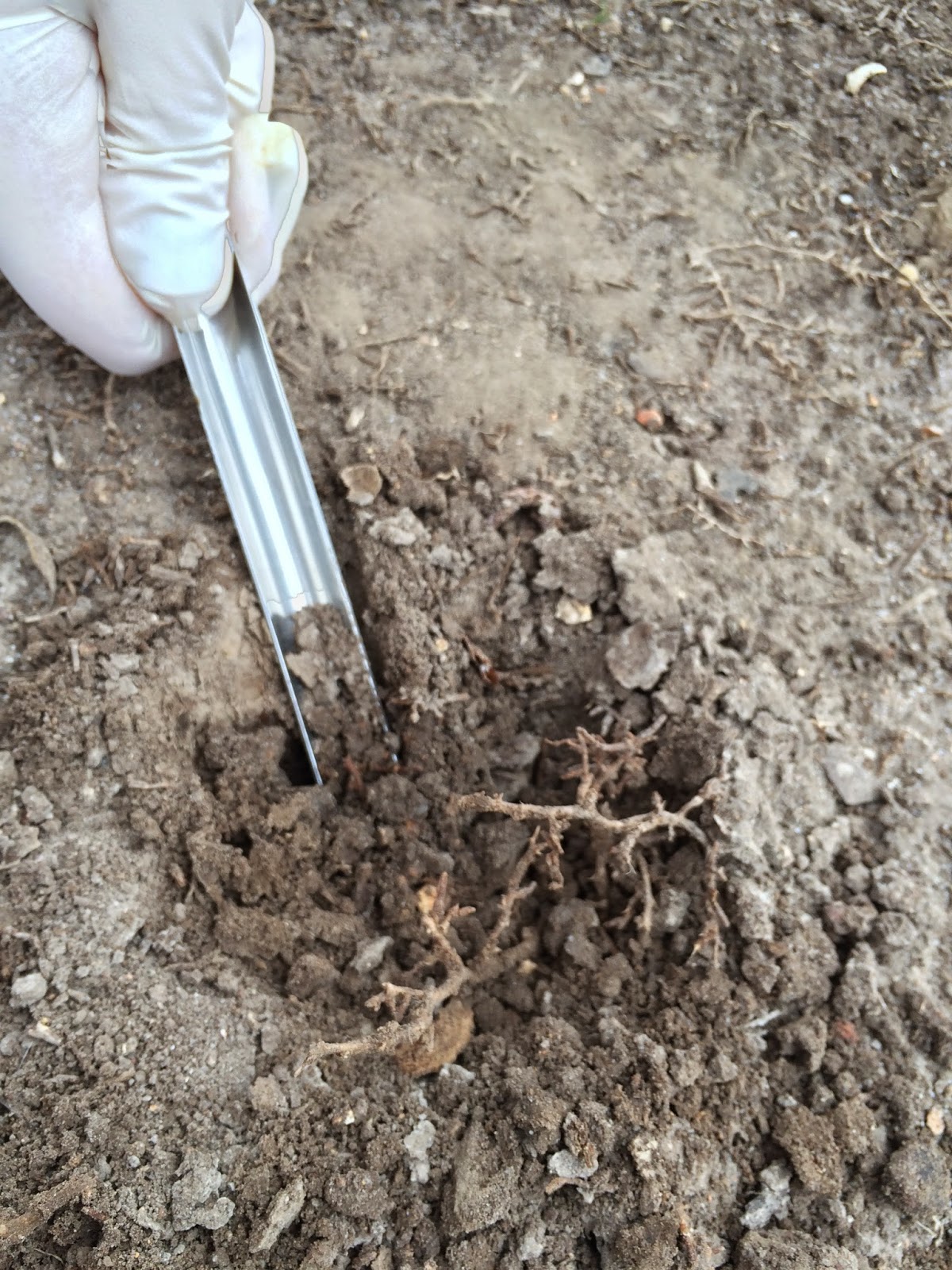Biodiversity is a key part when identifying microbes. As you can tell from our pictures below, there was a wide scale of biodiversity among the microbes that were present in each of our dilution plates. In the 10^-3 plate, there were too many colonies to count, but the colonies were small and scattered randomly across the plate. Towards the left of the plate you can see a large colony that is smooth and 'gel like'.
 |
| 10^-3 |
 |
| 10^-4 |
 |
| 10^-5 |
 |
| 10^-6 |
 |
| 10^-7 |
 |
| 10^-4 (Fungi) |
** It is very important to note and observe that bacteria outnumbers the fungi**
In lab, we counted the number of colonies that were present on each plate. To do this, we divided the number of colonies of the volume of the sample spread times the dilution factor for each plate. Below is a list of the data that was obtained after calculations:
10^-3 (TMTC)………….<280,000 microbes/1 g soil
10^-4 (28)……...………280,000 microbes/1 g soil
10^-5 (8)…….………….800000 microbes/1 g soil
10^-6 (2)…….………….2000000 microbes/1 g soil
10^-7 (0)…….………….0 microbes/1 g soil
Why does Biodiversity matter?
There are many ways to answer this question, because biodiversity is very important not just in terms of science, but to human application as well…
1) benefits that biodiversity provides us (such as drinking water, food, air)
2) medicinal resources
3) agricultural resources
4) wood products
5) diversity in genes
6) recreational activities- such as hiking, tourism, etc…pure enjoyment of nature!
Without biodiversity, we would not be able to survive and thrive as human beings. Biodiversity is often overlooked, but it is important to preserve biodiversity so that animals, plants, and microorganisms won't go extinct and we can continue to live on this earth as a human species!
Citation: http://www.globalissues.org/article/170/why-is-biodiversity-important-who-cares
Last week in lab, our goal was to establish a pure culture of soil microbes using the T streak strategy from the soil sample plates from the previous week.
Hannah used a colony from the 10^-4 plate. Below is a picture of the colony that Hannah took a sample from. It is the colony towards the bottom of the plate that is medium sized, and perfectly circular.
24 hours later, the plate was observed and below is a picture of the results that were obtained:
I (Samantha), chose a colony from the 10^-5 plate that was a larger colony, to see the difference that it would have after the 24 hours. Below is a picture of the colony that was swabbed.
After 24 hours, the plate was observed and the picture below shows the results front the T streak application. It was observed that the pure culture of soil microbe was present after the second quadrant of the T streak.









